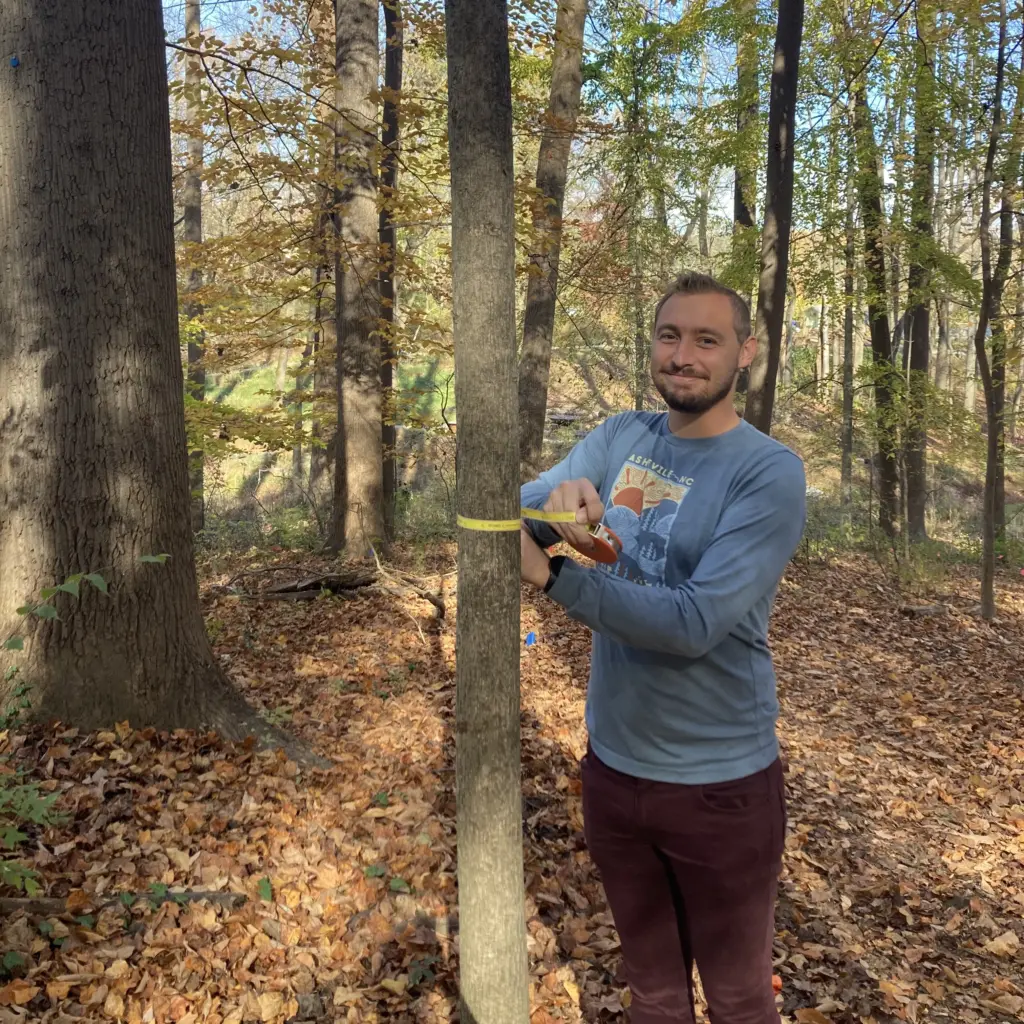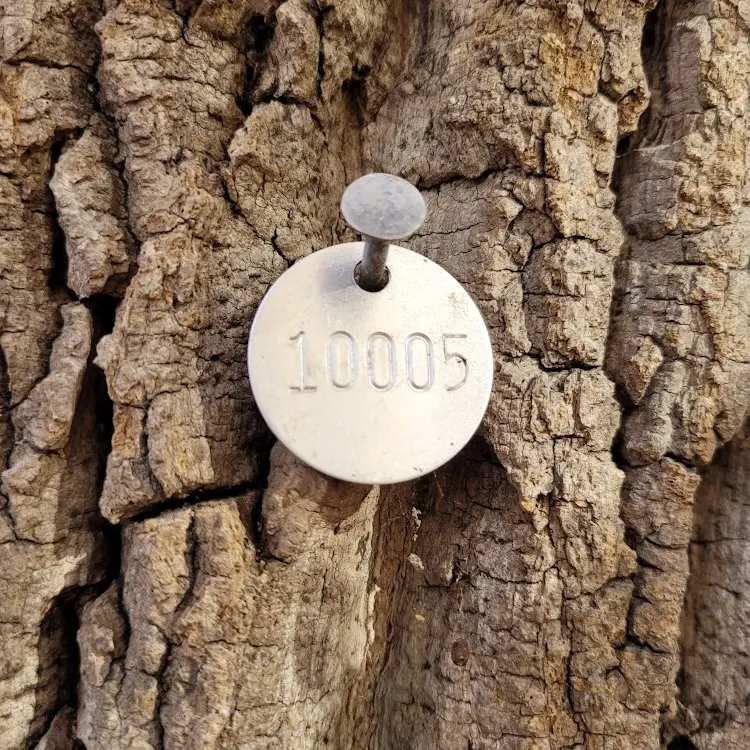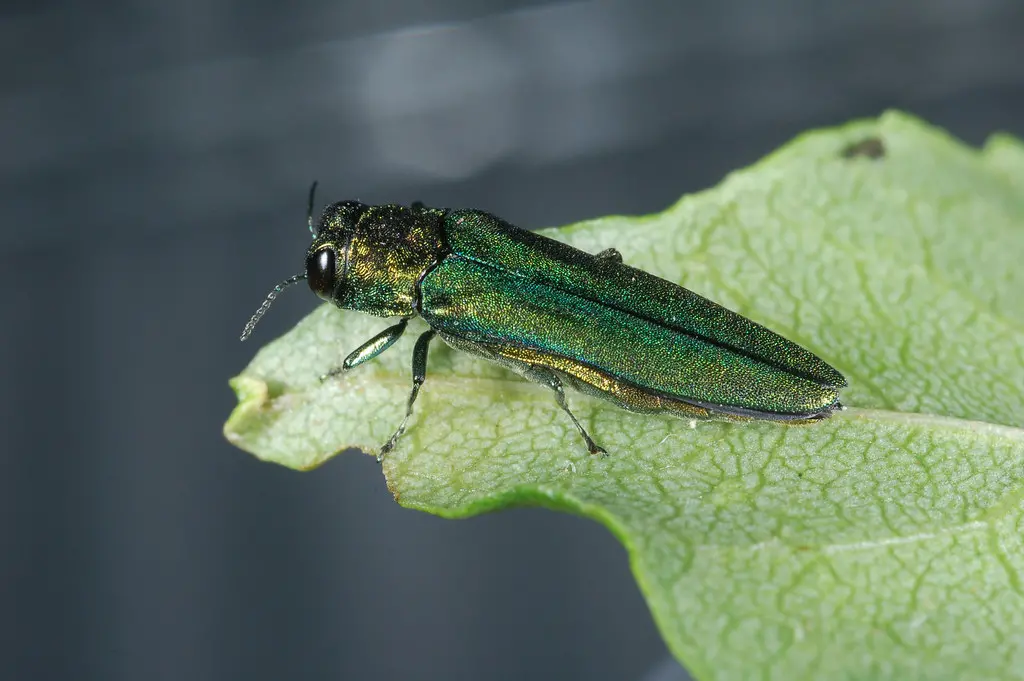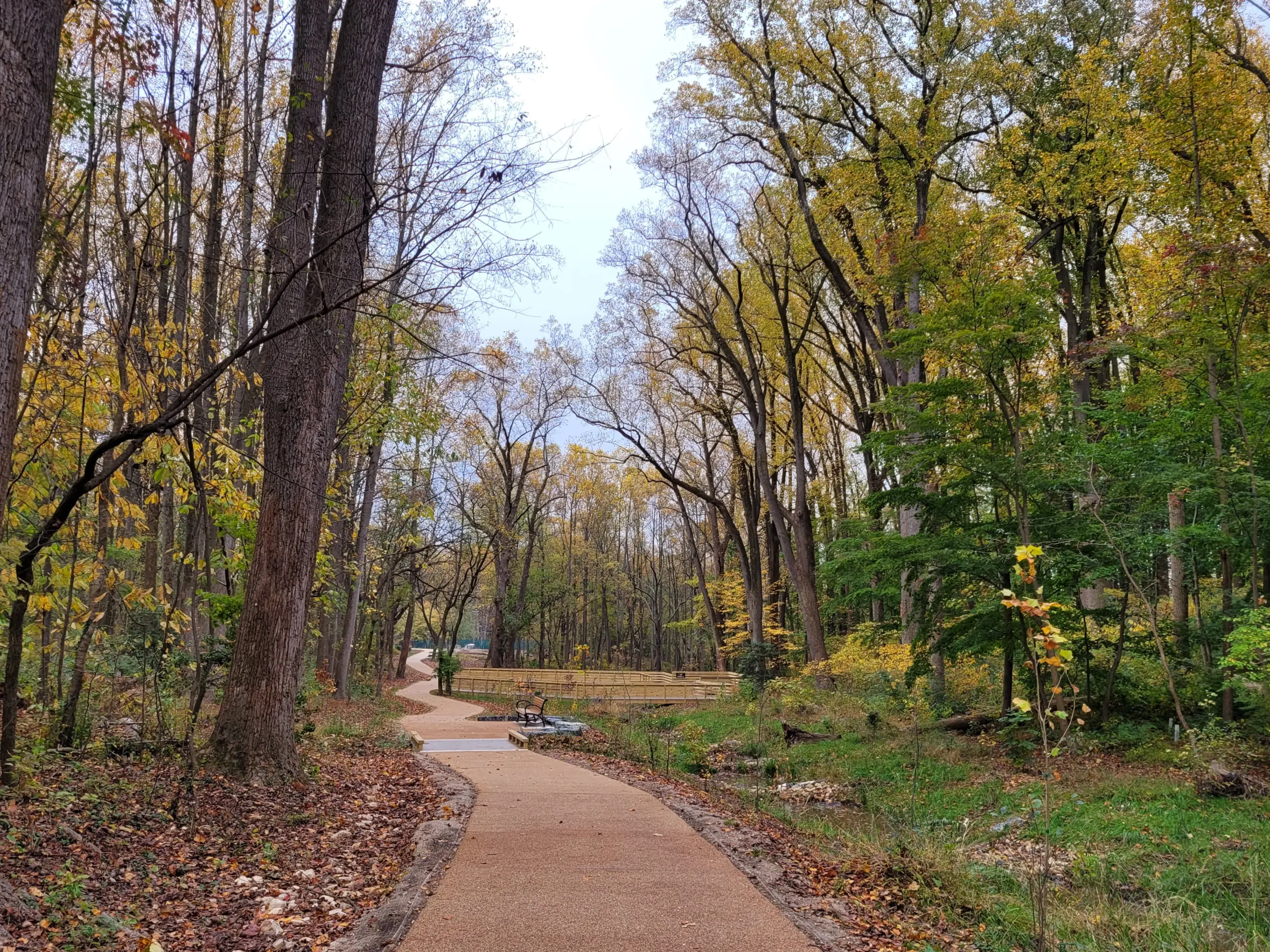By Grace Dho
With a new year comes new data! This past fall, restoration staff and volunteers began resurveying Woodend’s forest. The original, comprehensive forest survey of Woodend’s deer-protected area was completed between October 2019 and April 2020 by Habitat Manager, Bradley Simpson, and many dedicated volunteers. The forest survey team collected data within 67 30 m X 30 m square quadrats. Each tree over an inch in diameter was measured, identified, and tagged. The tree’s diameter was then used to calculate the basal area, or area of space taken up by the tree. The team also collected data on the forest understory plants, which included plants under an inch in diameter. These numbers helped us establish a baseline dataset for tracking the changes to Woodend’s deer-protected area over time.

The data collected in 2019 showed that Woodend’s forest had an extremely uneven tree species distribution. Using basal area as a metric, Liriodendron tulipifera, otherwise known as the tulip tree, was by far the dominant species at Woodend taking up 80.8% of the total tree space in the forest. To put this number in greater context, our second most dominant was Fagus grandifolia, American beech, with only 3.1% of the total coverage. These tulip trees are an early successional species, meaning they are some of the first trees to establish in an open area that is transitioning to forest. However, Woodend’s ideal future forest would be dominated by oaks and hickories, which represent a later successional species mixture and our location’s target reference ecosystem. Out of the 3,164 tagged trees, there were only 54 hickories and 14 oaks in the original dataset. The understory of the forest represented a similar story. Only 50% of the stems in the surveyed shrub layers were native, and no oak and hickory saplings were recorded. Instead, the dominant understory plants included invasives, like Acer palmatum, Japanese maple, and Lonicera maackii, Amur bush honeysuckle.

In 2023, the overstory of the northwest section did not change much. The dominant overstory tree in this section is still Liriodendron tulipifera, coming in at 84% coverage, followed by the expected Fagus grandiflora, with 5% coverage. This stays consistent with our predictions, as we did not expect the overstory to change drastically in five years. However, there was a lot of change in the forest understory. The dominant understory plant is the native Lindera benzoin, spicebush, accounting for 56% of the total stems counted in the shrub layer. This is a drastic improvement from the high concentration of invasives found in our understory in 2019. The dominant invasive of 2019, Lonicera maackii, came in second with only 13% of the total stems counted. The understory section of this forest also housed nine hickory stems and three oaks, which is a huge improvement from the zero stems recorded in 2019. These positive patterns are repeated in the ground layer as Lindera benzoin, spicebush, had the most ground coverage at 13%, outcompeting Hedra helix, English ivy, at 12%. More young oaks and hickories also revealed themselves in the ground layer, as hickories made up 0.18% of coverage while oak species made up 0.40% of coverage.
An unexpected rebound was also revealed in that data, as Fraxinus pennsylvanica, the green ash, was shown to be a prominent understory and ground layer plant. The ash population at Woodend, and in the United States, was decimated by the introduction of the Emerald Ash Borer. The Emerald Ash Borer killed all of Woodend’s adult ash trees, leaving us with only snags. However, young ashes are now making a comeback. Fraxinus pennsylvanica is the third most dominant understory and ground layer plant with 9% of the total stem count in the shrub layer and 10% of the coverage within the ground layer. This high concentration of young ash can be promising for the species, as it shows a potential for the population to rebound.

Overall, the first fifth of the forest resurvey is showing promising results. The overstory may not produce much change, but the understory shows a lot of growth and potential. Native species, such as spicebush have been shown to overtake the invasive species as the dominant understory plant. Oaks and hickories are also more prevalent than before, and they will hopefully continue to grow within the next year. As we continue the forest survey this year, we hope to see similar promising results.

